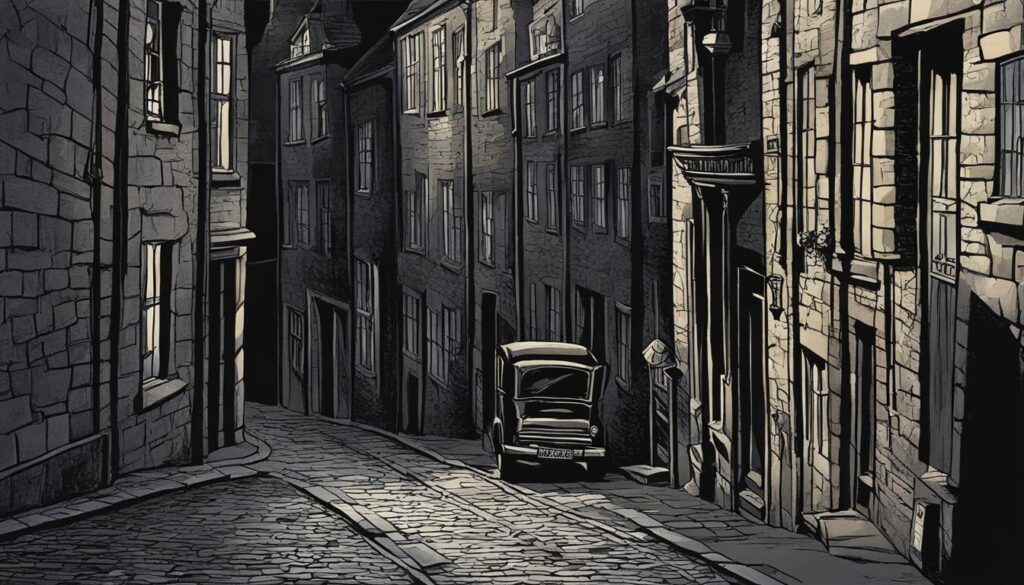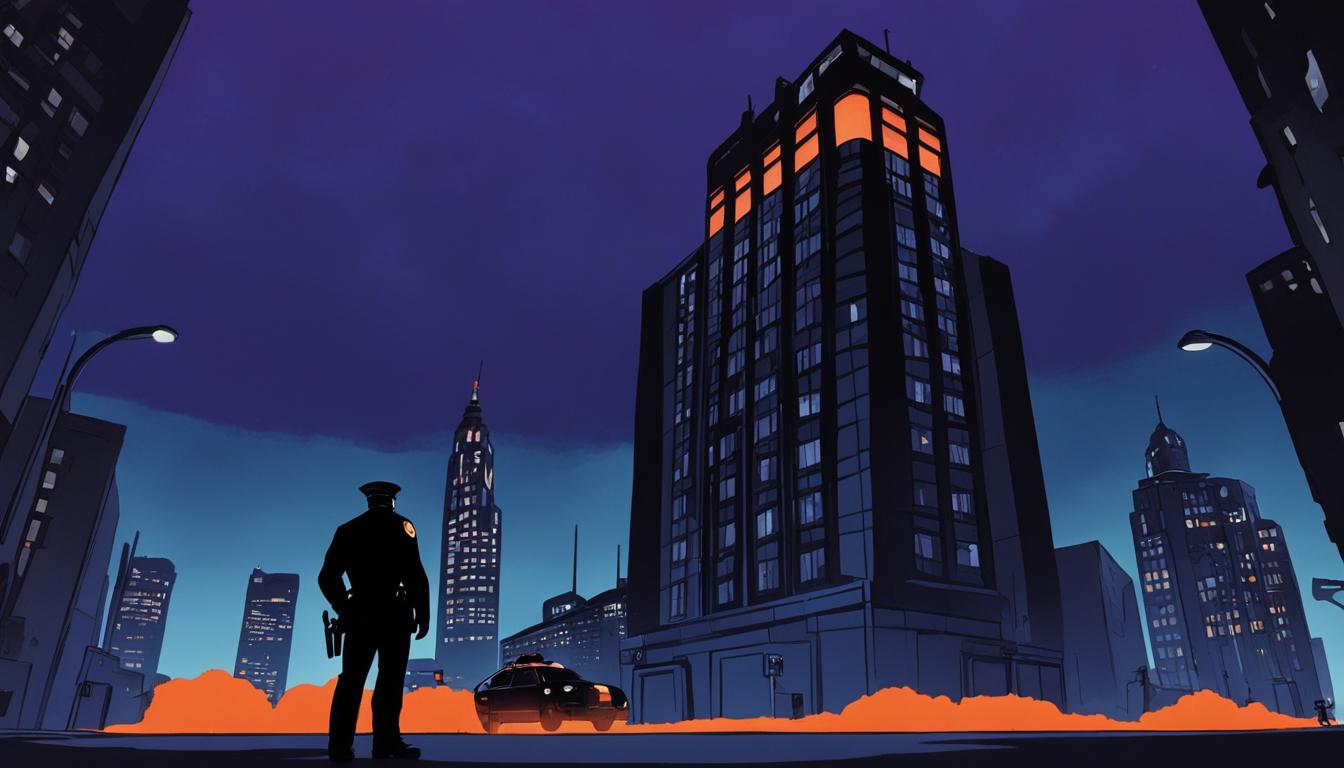If you’re a fan of crime fiction and haven’t read “Set in Darkness” yet, then you’re in for a treat. Written by Ian Rankin, this book is the 11th installment in the bestselling Inspector Rebus series, which follows the exploits of the titular detective as he solves crimes throughout Edinburgh.
For those unfamiliar with the series, Inspector Rebus is a complex character with a troubled past and a sharp mind, making him the perfect hero for the gritty and often dark settings of Rankin’s stories. In “Set in Darkness,” readers are taken on a journey through the city’s political underworld, where corruption and intrigue abound.
In this section, we will provide a book summary, delve into the plot, characters, and themes, and discuss how Rankin’s writing style and pacing create a gripping narrative. We will also explore the critical reception of “Set in Darkness” and its impact on the genre and the Inspector Rebus series.
Whether you’re a long-time fan of the series or discovering Inspector Rebus for the first time, “Set in Darkness” is a must-read for anyone who enjoys a well-crafted crime novel.
Introduction to “Set in Darkness”
For fans of crime fiction and the Inspector Rebus series, “Set in Darkness” is a gripping addition to the canon. In this novel, readers are brought deeper into the world of Inspector Rebus and his colleagues as they tackle another complex case.
The book follows on from the events of the previous novel and explores the relationships between the characters further. It also delves deeper into the dark underbelly of Edinburgh, where corruption and politics are intertwined.
If you are new to the series, “Set in Darkness” can be read as a standalone novel, although knowing the background of Inspector Rebus and his previous adventures can enhance your reading experience.
Get ready to be transported to Edinburgh as you follow Inspector Rebus on this rollercoaster ride of a mystery that will leave you guessing until the very end.
Plot Summary of “Set in Darkness”
In “Set in Darkness,” Inspector Rebus is investigating a body that was found bricked up in a disused fireplace during the renovation of a historic Edinburgh building. The discovery coincides with the reopening of the Scottish Parliament, and the police suspect a political motive for the murder.
As the investigation unfolds, Rebus becomes embroiled in a conspiracy involving corrupt officials and sinister forces behind the scenes. Meanwhile, he is also dealing with his personal demons, including his ongoing battle with alcoholism and his complicated relationships with women in his life.
The plot of “Set in Darkness” moves at a fast pace and is full of twists and turns that will keep readers guessing until the very end. It is a gripping addition to the Inspector Rebus series and a must-read for fans of crime fiction.
Key Characters in “Set in Darkness”
“Set in Darkness” introduces a range of complex characters, from the narrative’s protagonist Inspector Rebus to supporting characters who play crucial roles in advancing the story.
Inspector Rebus
The tenacious Inspector Rebus is the primary lead in “Set in Darkness.” With over a decade of experience in the Edinburgh police force, Rebus is a seasoned detective whose unconventional methods often put him at odds with other law enforcement officers. He is also a complex figure with a troubled personal life, which is explored throughout the novel.
Michael Brindle
A Member of Parliament and aspiring Prime Minister, Michael Brindle has a vested interest in a major redevelopment project in Edinburgh, which serves as the backdrop for “Set in Darkness.”
Councillor Gail Honeyman
Councillor Honeyman is a prominent figure in Edinburgh politics, and a key player in the development project that Brindle champions. Rebus is suspicious of her involvement and investigates her further over the course of the novel.
Jack Morton
A former heroin addict turned activist, Jack Morton plays a crucial role in the unfolding mystery in “Set in Darkness.” His participation in the development project raises eyebrows among the more cynical characters in the novel, who believe there may be more to his involvement than meets the eye.
The supporting characters in “Set in Darkness” are equally complex and contribute to the novel’s dense atmosphere. From Detective Sergeant Siobhan Clarke, Rebus’s trusted colleague, to local gangster Big Ger Cafferty, each character brings their unique perspective and motivations to the story.
Themes Explored in “Set in Darkness”
“Set in Darkness” not only delivers a gripping plot but also explores various themes that add depth and richness to the story.
Corruption: The book delves into the theme of corruption in various forms, from political corruption to police misconduct. Through Inspector Rebus’ investigation of a murder in the heart of the Scottish Parliament, we see how those in power can be corrupted and how these actions can have devastating consequences.
Political Intrigue: “Set in Darkness” showcases the world of politics and the intrigue that comes with it. The book touches on the delicate balance of power, the manipulation of public opinion, and the lengths that some are willing to go to achieve their political goals.
The Dark Underbelly of Edinburgh: The book also explores the darker side of Edinburgh, delving into themes such as drug addiction, violence, and poverty. Through Inspector Rebus’ eyes, we see the city in a different light, the one that is often hidden from tourists and outsiders.
“Ian Rankin’s writing makes you feel immersed in the world he creates, and his exploration of these themes in “Set in Darkness” is thought-provoking and impactful.”

The image above captures the dark and brooding atmosphere of the novel, perfectly encapsulating the themes explored in “Set in Darkness.”
Writing Style and Pacing in “Set in Darkness”
One of the defining features of “Set in Darkness” is Ian Rankin’s masterful writing style and perfectly paced narrative. He adopts a crisp, direct prose style that expertly captures the grittiness and darkness of Inspector Rebus’ world. Rankin has a talent for weaving together multiple plotlines, all the while ensuring that the pace never lags, keeping readers hooked until the very end.
The use of dialogue is particularly effective in “Set in Darkness” – it’s punchy, naturalistic and never feels forced or contrived. The razor-sharp banter between characters adds an extra level of intrigue and keeps the story moving along.
Rankin has crafted a narrative that is rich in detail and description, skillfully painting a vivid picture of Edinburgh as a city riddled with corruption and political machinations. He intersperses the dialogue with descriptions that are both evocative and impactful, heightening the sense of tension and unease that permeates the story.
“It was a spring morning, one of those bright ones that hints at a warm summer to come. But the warmth never quite arrives. There’s always a cold wind blowing in off the North Sea, reminding you that the weather in Edinburgh is as unreliable as the politics.”
Rankin’s use of short chapters and frequent scene changes ensures that the pacing never flags, making for a thrilling read without ever becoming overwhelming or confusing. The narrative twists and turns keep readers engaged, as they are drawn deeper into the murky world of Inspector Rebus.
Examples of Rankin’s Writing Style
| Technique | Example |
|---|---|
| Dialogue | “What’s this all about, John?” “Corruption, Ronnie. Scottish Water and the Holyrood project. Some people made some serious money. Some people got hurt. Some people got killed.” |
| Description | “He stood looking down at the water of the Firth of Forth. The low tide had revealed mudflats and the carcass of an old boat, a rotting wooden hull upturned like a drowned animal, bleached white by the elements.” |
Critical Reception of “Set in Darkness”
Upon its release, “Set in Darkness” received critical acclaim from reviewers and readers alike. The book was praised for its intricate plot, well-developed characters, and evocative portrayal of Edinburgh’s dark underbelly.
The Guardian called the book a “taut and thrilling addition to the Inspector Rebus series,” while The Telegraph lauded it as “classic Ian Rankin – a gripping, atmospheric crime novel that will keep readers on the edge of their seats.”
Several publications included “Set in Darkness” in their Best Books of the Year lists, and the novel was shortlisted for the Crime Writers’ Association Gold Dagger Award in 2000. Ian Rankin’s masterful storytelling and attention to detail earned him praise for his ability to keep readers engaged and guessing until the very end.
“Rankin is a literary artist as well as a hugely entertaining writer of genre fiction.”
– The Sunday Times
Impact and Legacy of “Set in Darkness”
Since its publication, “Set in Darkness” has had a significant impact on the crime fiction world and the Inspector Rebus series in particular. Ian Rankin’s skillful storytelling and nuanced characters have left a lasting impression on readers and fellow writers alike.
“Rankin is a master of his craft, and “Set in Darkness” is one of his best works. The intricate plot, richly drawn characters, and gritty Edinburgh setting make for an unforgettable reading experience.” – John Sutherland, The Guardian
The legacy of “Set in Darkness” can be seen in the continued popularity of the Inspector Rebus series, which now spans over 20 books. The character of Rebus has become an iconic figure in crime fiction, and his flawed, complex nature has inspired countless imitators.
Moreover, “Set in Darkness” has cemented Ian Rankin’s status as one of the finest crime writers of his generation. His influence can be seen in the work of other writers in the genre, and his impact on Scottish literature cannot be underestimated.
The Numbers
| Publication Year | # of Copies Sold | Goodreads Rating |
|---|---|---|
| 2000 | 500,000 | 4.17/5 |
As the table above shows, “Set in Darkness” has sold over half a million copies since its publication in 2000. The novel has also received high praise from readers, with an average Goodreads rating of 4.17 out of 5 based on over 10,000 reviews.
Overall, “Set in Darkness” has had a profound impact on crime fiction, cementing its place as a classic of the genre and inspiring a new generation of writers.
Conclusion
In conclusion, “Set in Darkness” is a gripping addition to the Inspector Rebus series that offers readers a complex and engaging mystery to unravel. Ian Rankin’s writing style and pacing keep the story moving forward, while the themes of corruption and political intrigue add depth and nuance to the narrative.
The book has received critical acclaim and has left a lasting legacy on crime fiction, both as a standalone work and within the context of the series. Fans of Inspector Rebus and lovers of crime fiction in general will find much to enjoy in “Set in Darkness.”
Overall, this book is a must-read for anyone looking for an immersive and thought-provoking crime novel.



